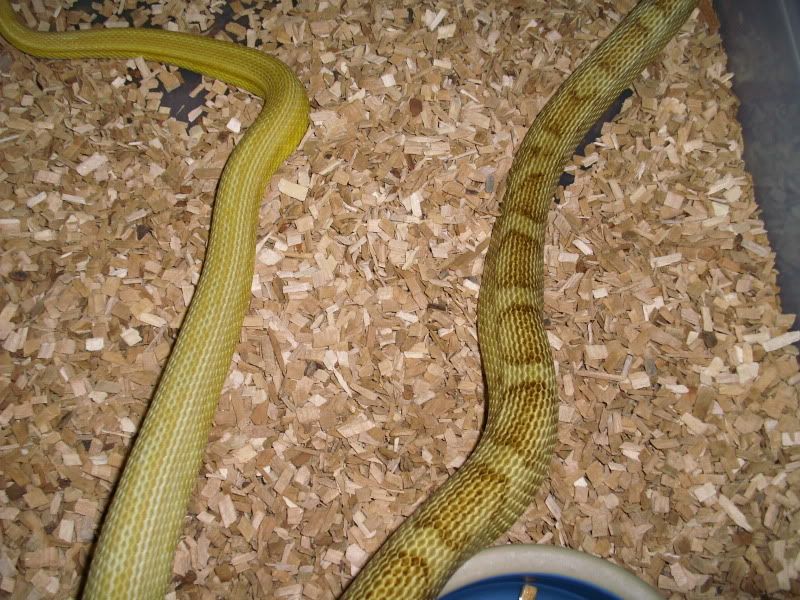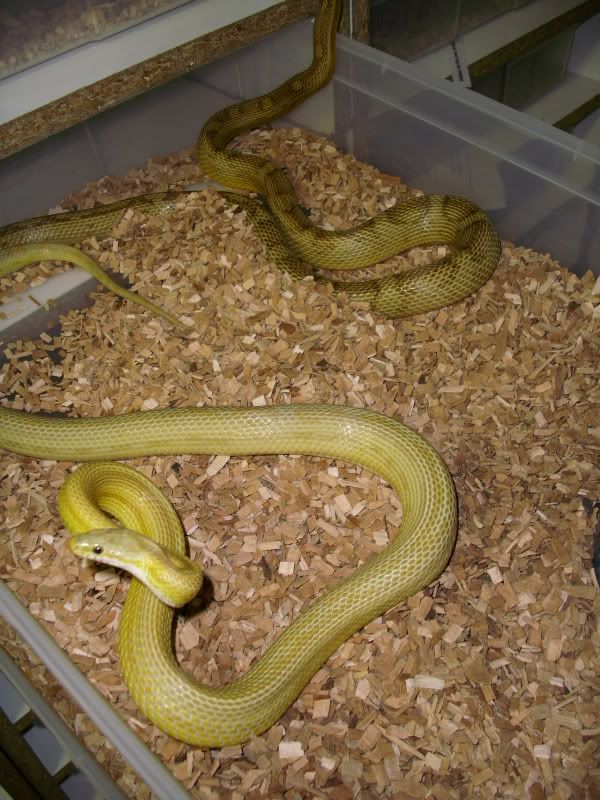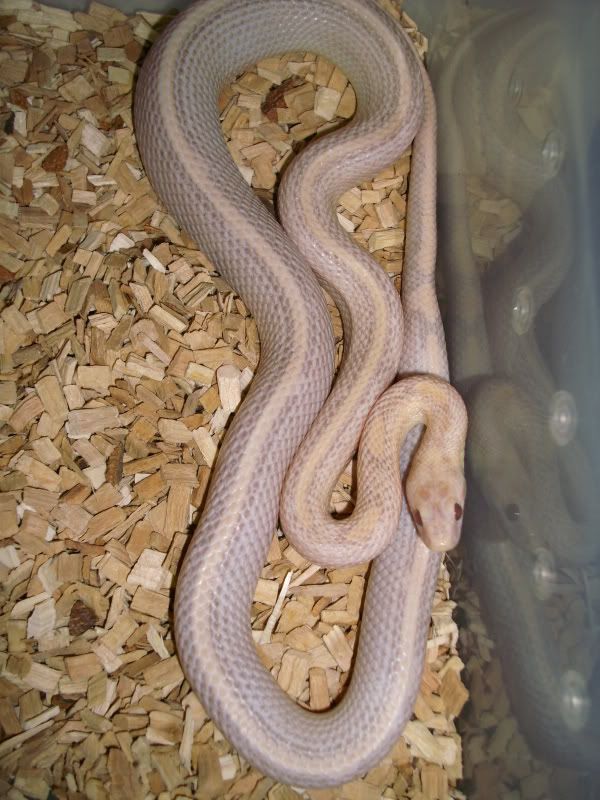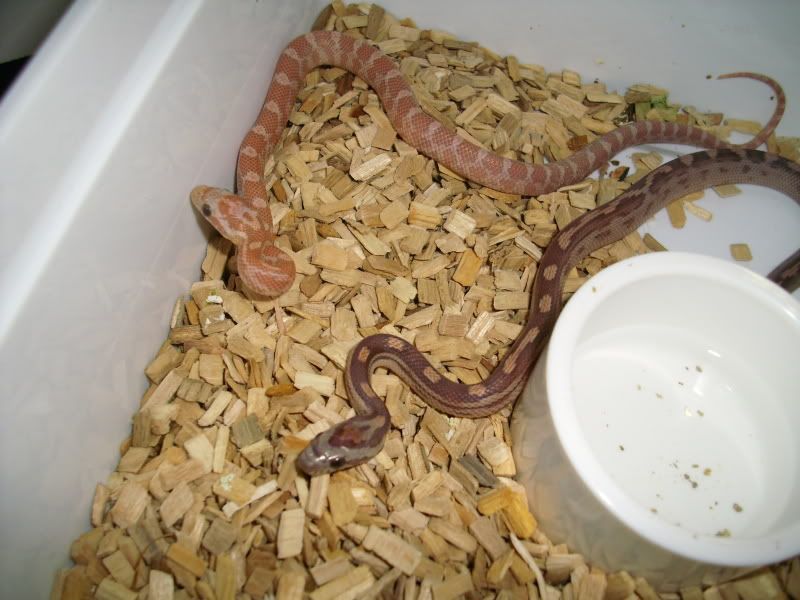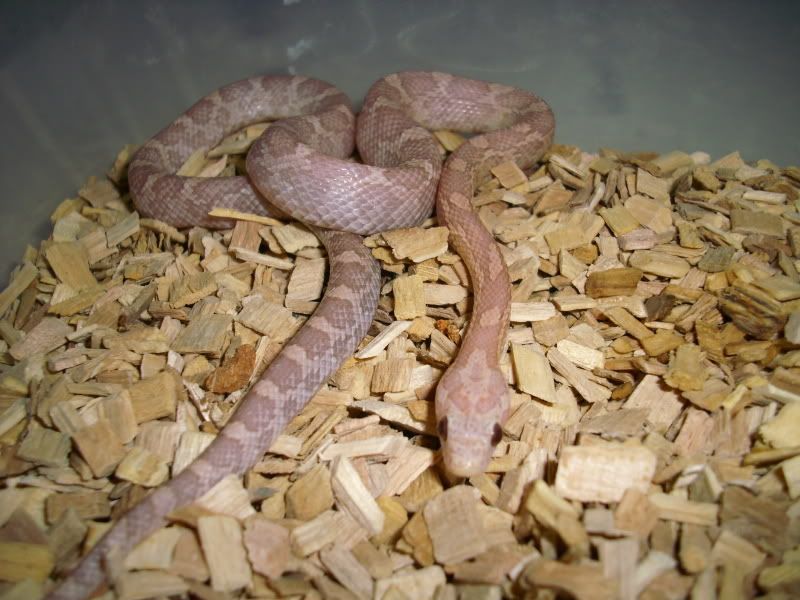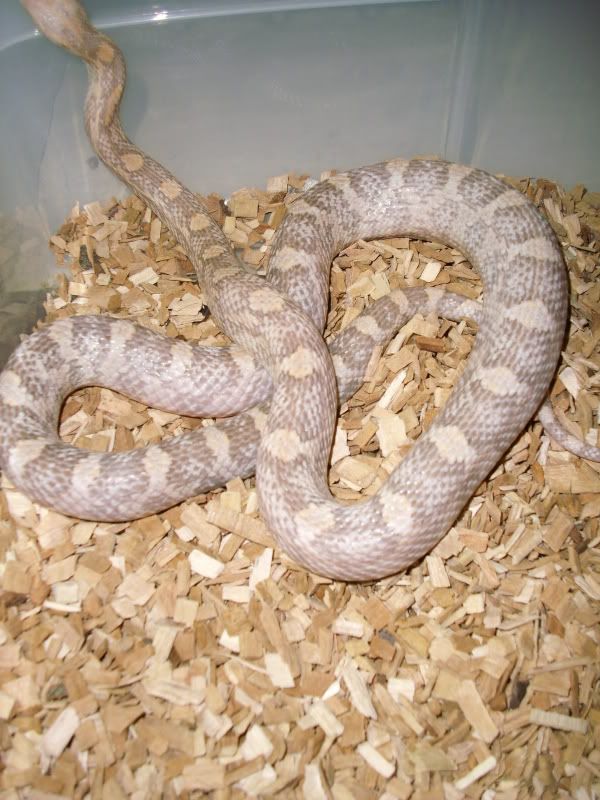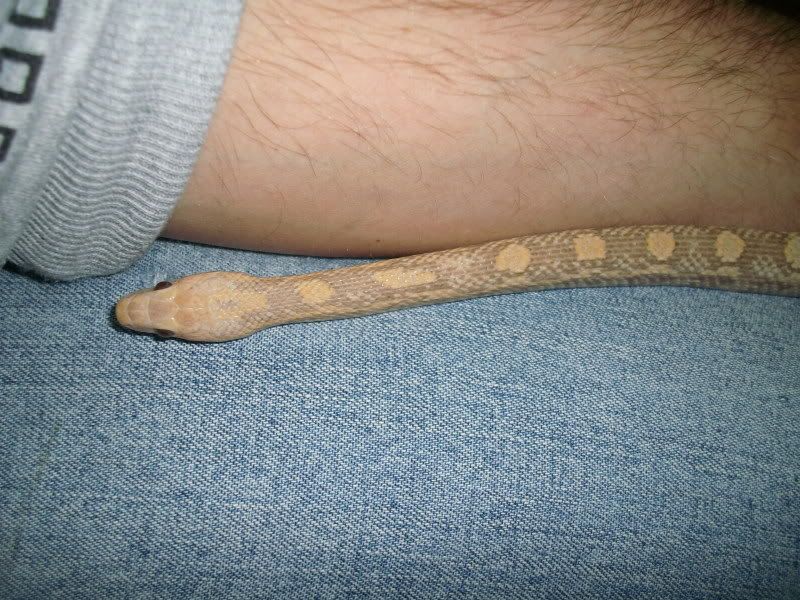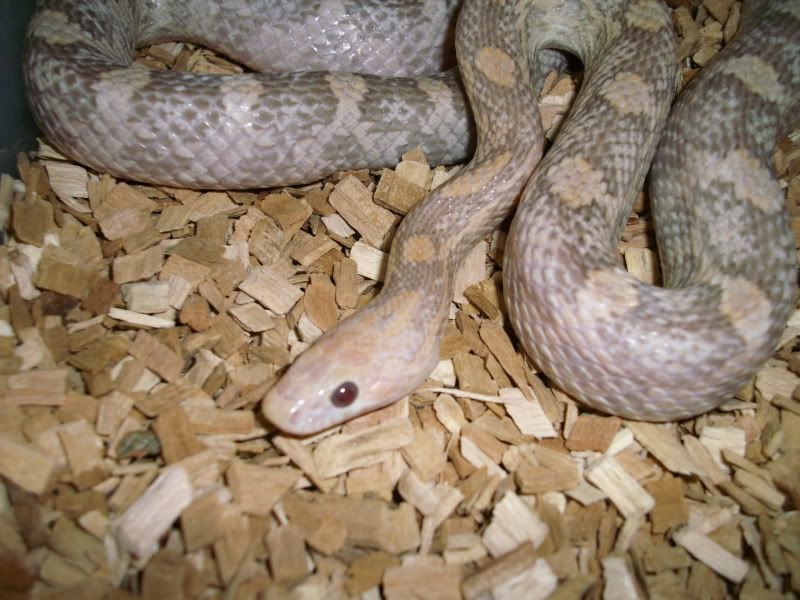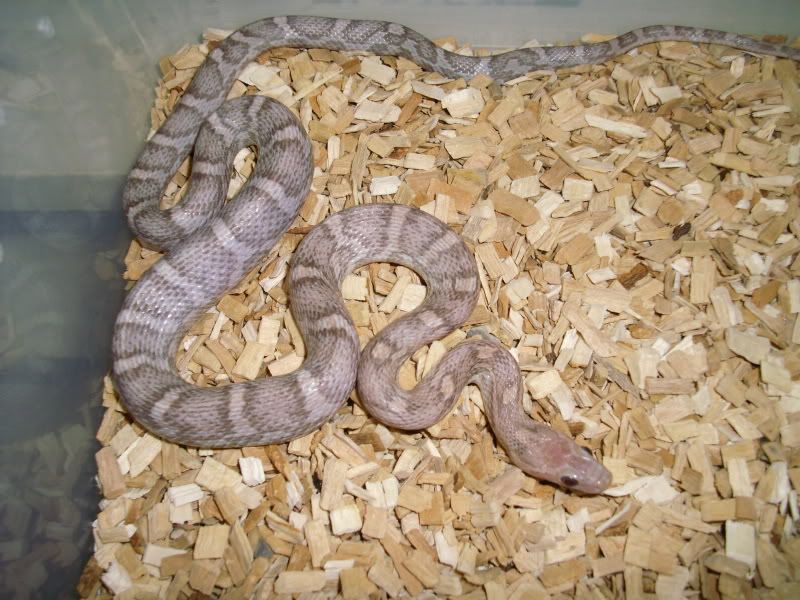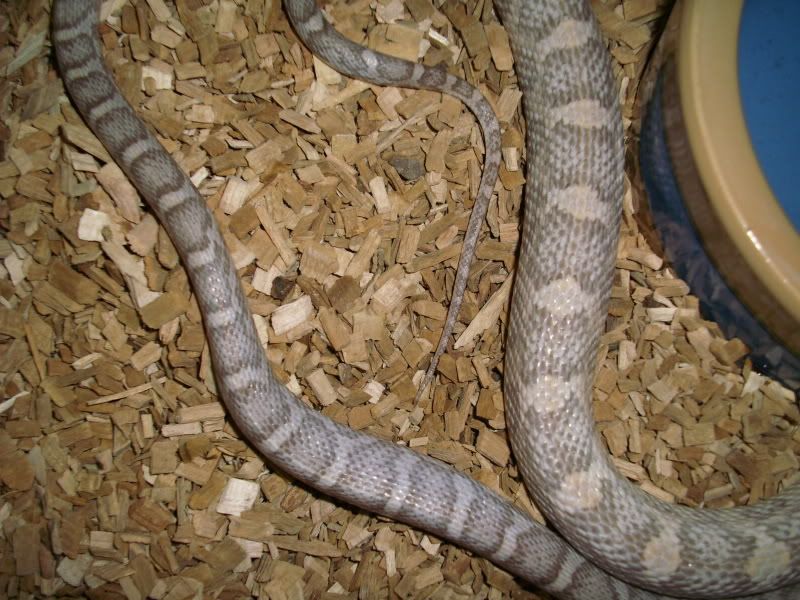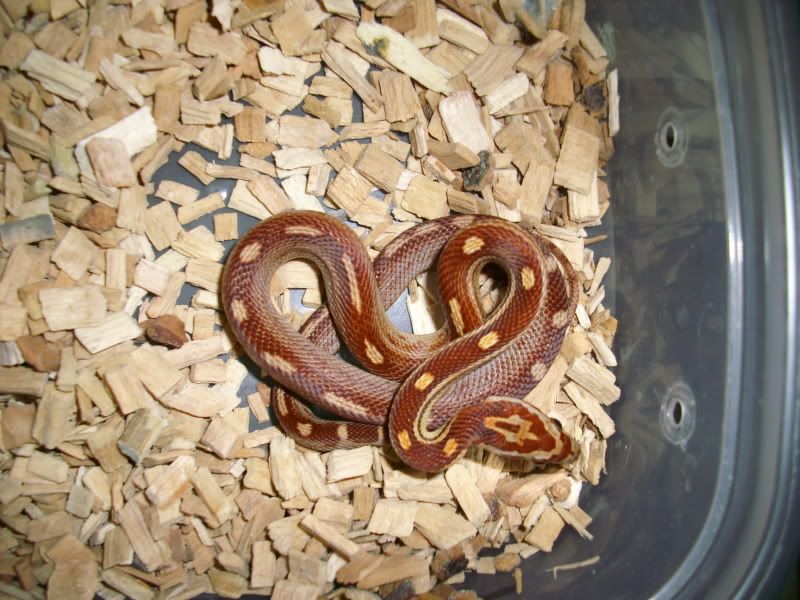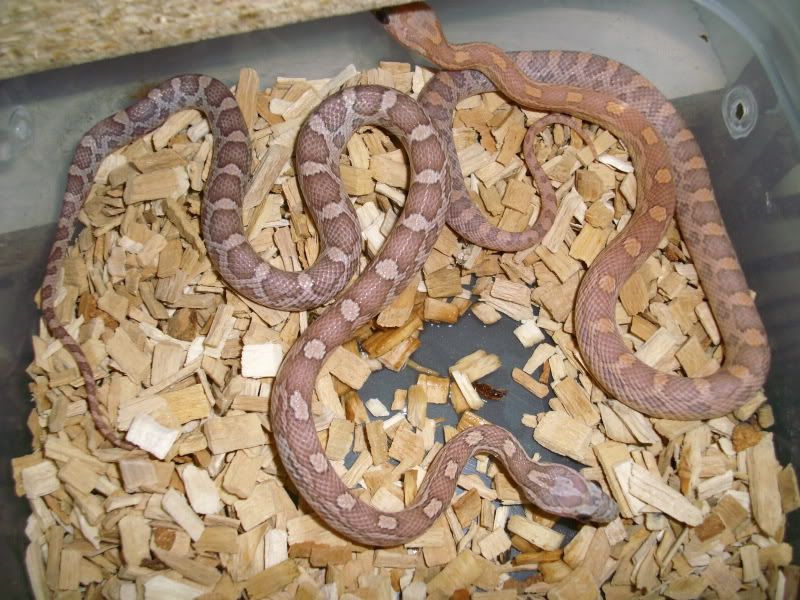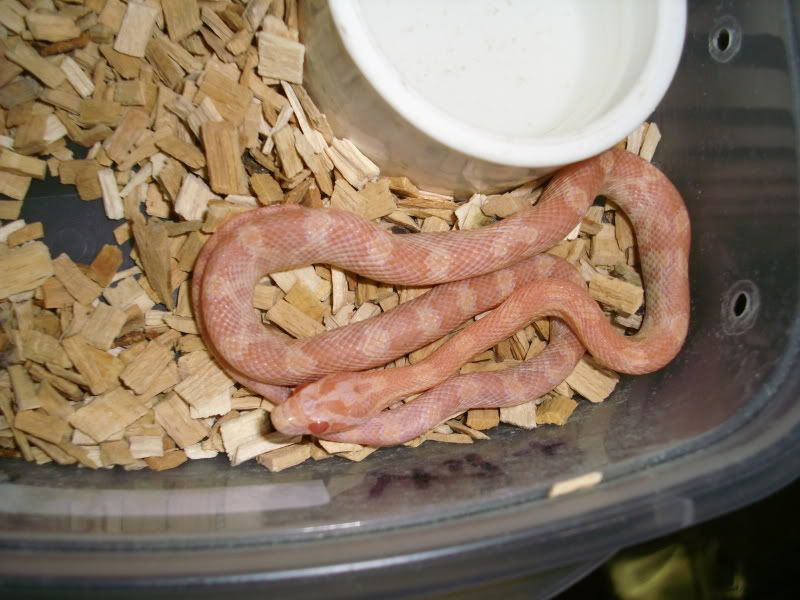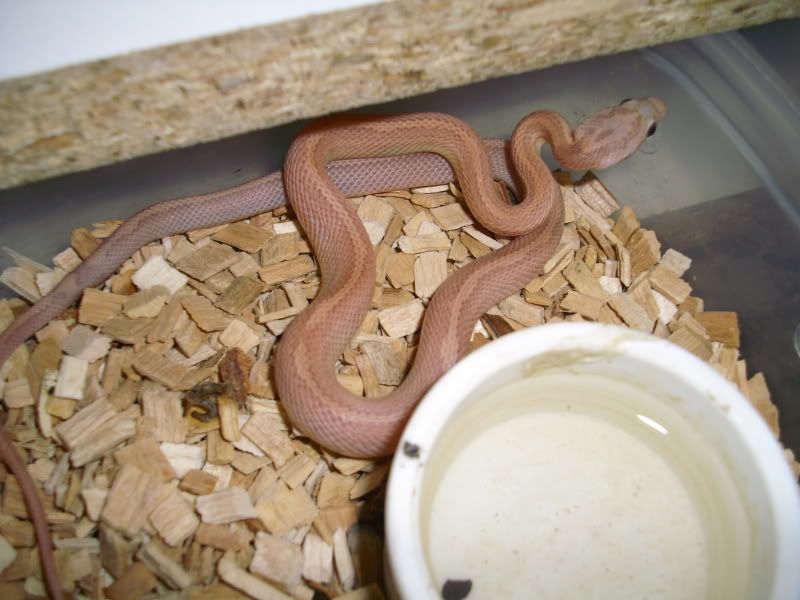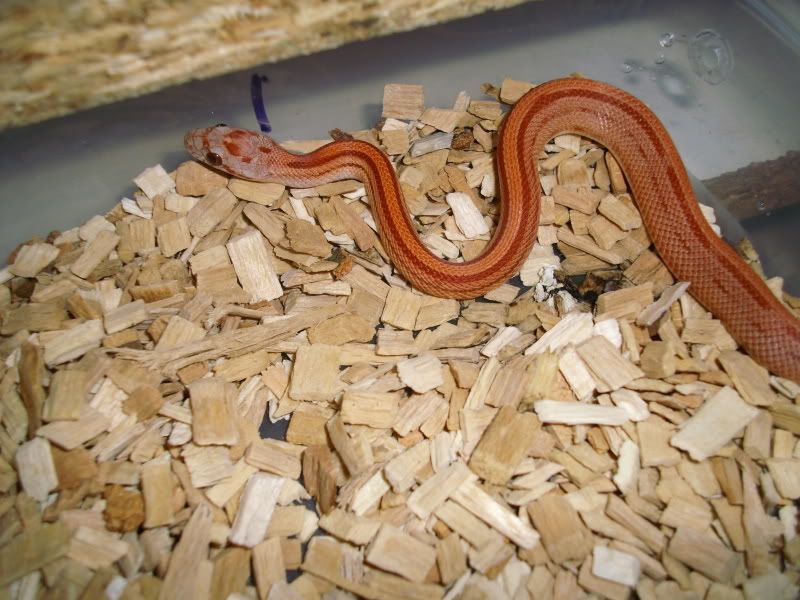Josua
Colubrids rule
Hi everyone,
a couple years ago I read on this forum about the "mystery peach" corns and I thought they looked awesome. I am a great fan of caramels and lavenders, so what better than to start my own "little" project.
I read in an other topic about the peach corn listed on Ian's Vivarium, which is a snake of mine. I thought I had everything figured out, but this year I start scratching my head again..... It is going to be a lot of boring text, but I will try to be as detailed as possible in the hopes someone here can help me figure this out.
I will start at the beginning.
My project started in 2007 with a male "hypo lavender" which was bred my Rich Z and got indirectly to me. I just bought it without any background info, but he later turned out to be het. anery A.
The female I used was a Motley het. caramel and amel (unknown breeder) and proved out in 2011 to be a genetic motley striped.
I kept back 2.2 'Normals' which looked the nicest *almost hypo-ish*
2.1 looked more yellow (by the poss. het. caramel maybe) and female number 2 looked less yellow.
Here are recent pics of Female number 1:


In 2009 I put pair 1 and pair 2 together and got babys from both of them.
Pair 2 did produce hypos / lavender / motleys and combos, but no caramels.
From pair 1 I did get caramels, next to all the other combos, and I also bred a baby I thougt to be a Hypo lavender caramel motley, which I called the Peach Motley since I had read that name on this forum. No one in my country produced this, so again I had no comparisson, but this male was way to colorfull to be just a hypo lavender motley.
Here he is now (I can't find any baby pics he was a lot brighter as baby and a yearling off course)
he was a lot brighter as baby and a yearling off course)

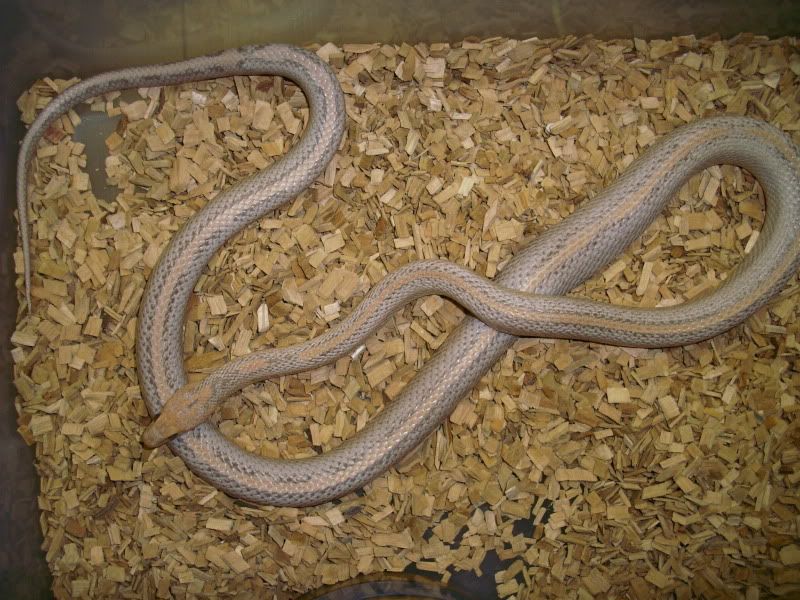
I also kept 0.2 "caramel motleys", one really light almost looking like an amber motley but different and one really dark brownish female.
Both of them were nothing like any caramel motleys I had seen, and in the hope that they were het. lavender, I kept them *thank god*
The dark one today:
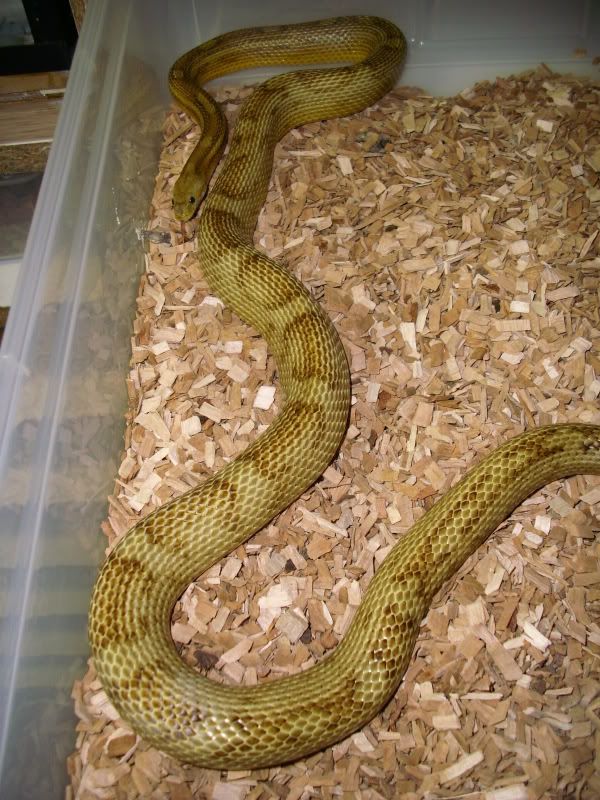
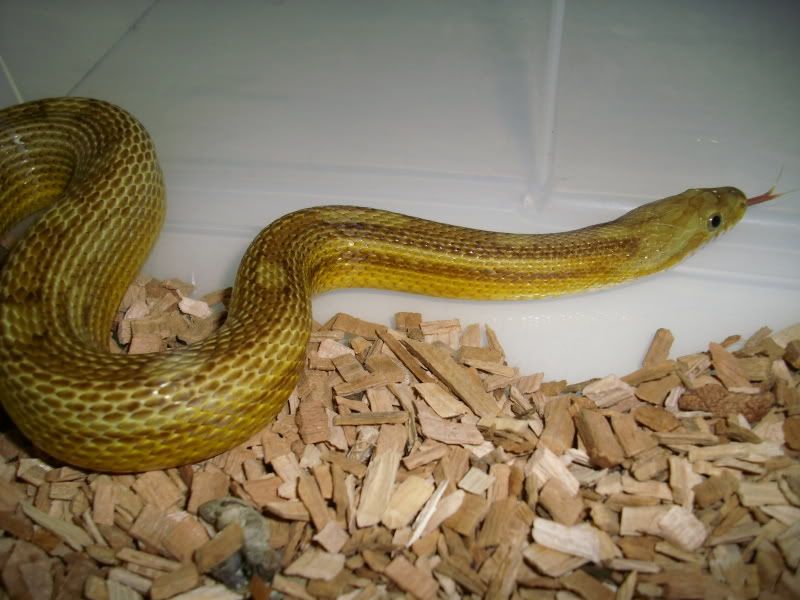
The ligther one:
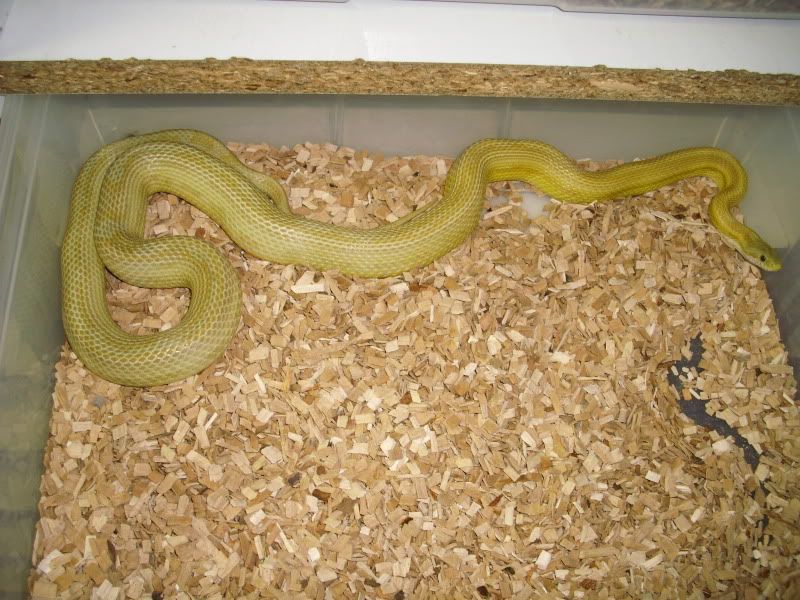

a couple years ago I read on this forum about the "mystery peach" corns and I thought they looked awesome. I am a great fan of caramels and lavenders, so what better than to start my own "little" project.
I read in an other topic about the peach corn listed on Ian's Vivarium, which is a snake of mine. I thought I had everything figured out, but this year I start scratching my head again..... It is going to be a lot of boring text, but I will try to be as detailed as possible in the hopes someone here can help me figure this out.
I will start at the beginning.
My project started in 2007 with a male "hypo lavender" which was bred my Rich Z and got indirectly to me. I just bought it without any background info, but he later turned out to be het. anery A.
The female I used was a Motley het. caramel and amel (unknown breeder) and proved out in 2011 to be a genetic motley striped.
I kept back 2.2 'Normals' which looked the nicest *almost hypo-ish*
2.1 looked more yellow (by the poss. het. caramel maybe) and female number 2 looked less yellow.
Here are recent pics of Female number 1:


In 2009 I put pair 1 and pair 2 together and got babys from both of them.
Pair 2 did produce hypos / lavender / motleys and combos, but no caramels.
From pair 1 I did get caramels, next to all the other combos, and I also bred a baby I thougt to be a Hypo lavender caramel motley, which I called the Peach Motley since I had read that name on this forum. No one in my country produced this, so again I had no comparisson, but this male was way to colorfull to be just a hypo lavender motley.
Here he is now (I can't find any baby pics


I also kept 0.2 "caramel motleys", one really light almost looking like an amber motley but different and one really dark brownish female.
Both of them were nothing like any caramel motleys I had seen, and in the hope that they were het. lavender, I kept them *thank god*
The dark one today:


The ligther one:



